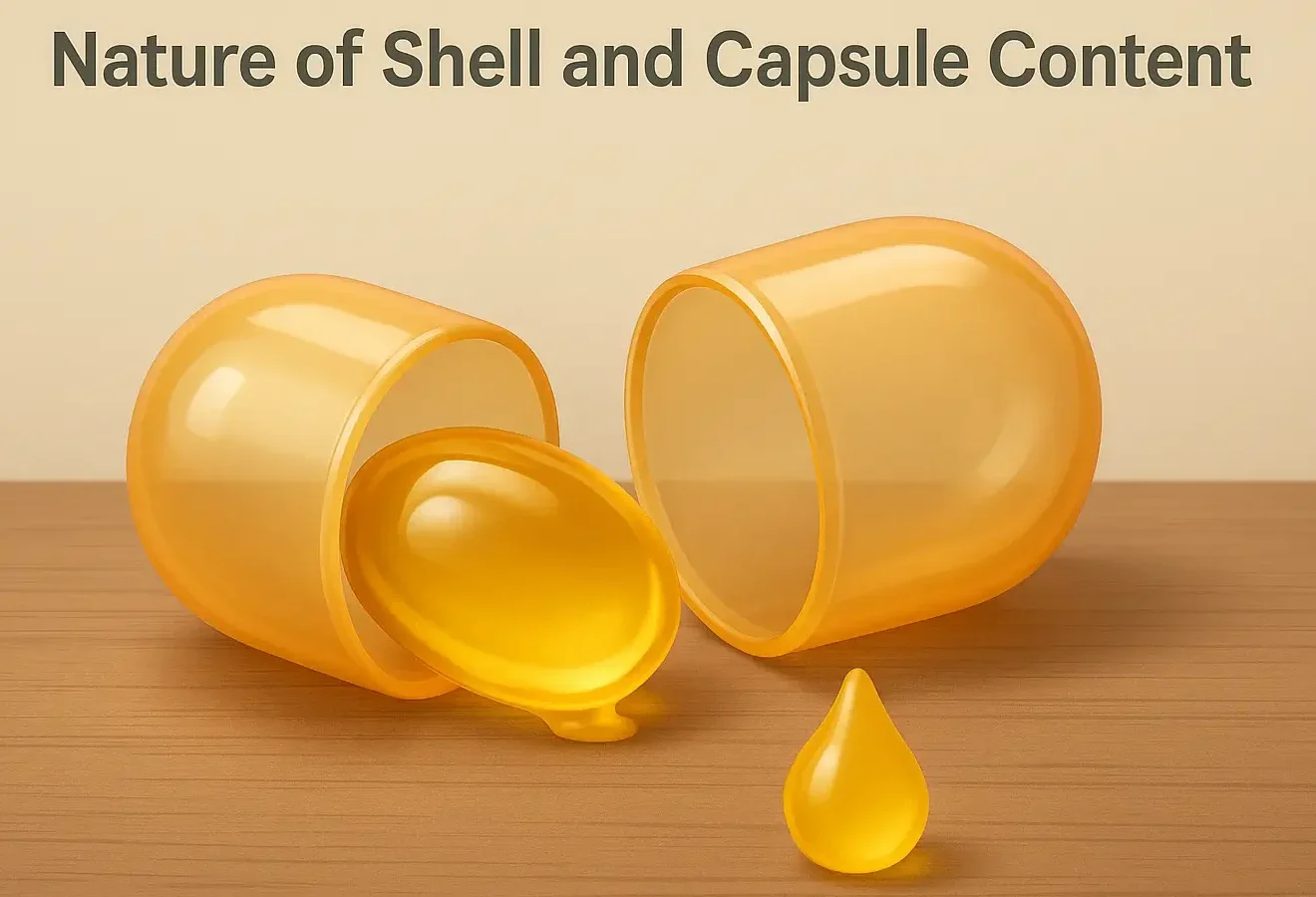Nature of Shell and Capsule Content includes gelatin or non-gelatin materials that form the outer shell, designed for stability, protection, and ease of swallowing.
Nature of Shell and Capsule Content also refers to the inner content—liquids, powders, granules, or semi-solids—formulated for accurate dosing and targeted drug release.
Nature of the Shell:
- Soft gelatin capsules (soft gels) consist of a single, seamless, and pliable shell that encloses the drug or formulation in liquid or semi-solid form.
- The shell is primarily composed of:
- Gelatin: The main component, derived from animal collagen (Type A or Type B).
- Plasticizers: Substances like glycerin, sorbitol, or propylene glycol are added to make the shell flexible and soft.
- Colorants and Opacifiers: Enhance appearance and prevent photodegradation. Titanium dioxide is commonly used as an opacifier.
- Preservatives: Like methylparaben and propylparaben, to prevent microbial growth.
Key Characteristics:
- Soft and elastic, unlike hard gelatin capsules.
- Acts as a barrier against oxygen, moisture, and light.
Nature of Capsule Content:
- Soft gels are designed to encapsulate liquid or semi-solid formulations, including:
- Solutions: Drugs dissolved in non-aqueous solvents (e.g., oils like soybean or medium-chain triglycerides).
- Suspensions: Drugs dispersed in a suitable liquid carrier.
- Emulsions: Oil-in-water or water-in-oil emulsions.
- Microemulsions or Self-Emulsifying Systems: Formulations that enhance bioavailability of poorly water-soluble drugs.
Exclusions:
- Aqueous formulations cannot be encapsulated in soft gels as water can degrade the gelatin shell.

